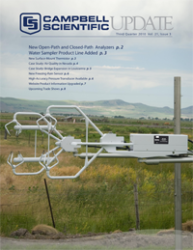
Campbell Scientific's 0871LH1 Freezing Rain Sensor detects the presence of icing conditions so that appropriate actions can be taken to prevent damage to power and communication lines, to warn of road hazards, or to keep ice off of a plane's wings.
The sensor is also useful in wind-power applications to help determine when ice is forming on turbine blades. Ice on a wind turbine’s blades is undesirable because:
- The blade can throw large chunks of ice a considerable distance—an extremely dangerous, potentially lethal situation.
- Formation of ice can cause unbalanced loading on the turbine’s blades, bearings, and gear box.
- Ice reduces the turbine's power output.
The 0871LH1 can also be used for wind prospecting applications by helping predict the amount of time a potential wind power site may be out of commission due to icing conditions. Additionally, the sensor lets users know when ice is preventing their wind sensors from providing data.
The 0871LH1 uses resonant frequencies to determine the presence of icing conditions. Its main component is a nickel alloy rod that has a natural resonant frequency of 40 kHz. As ice collects on the rod, the added mass causes the resonant frequency to decrease. When the frequency decreases to 130 Hz (or 0.02-in. layer of ice), an internal heater automatically defrosts the sensor.

